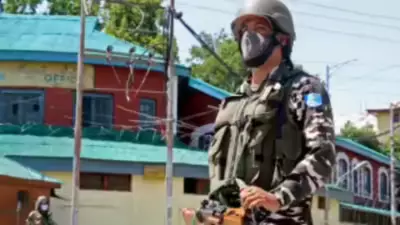
In a significant move to enhance aviation security, India's Directorate General of Civil Aviation (DGCA) has issued a crucial directive requiring immediate reporting of GPS spoofing incidents within ten minutes of detection. This proactive measure aims to address growing concerns about navigation system interference affecting aircraft operations across Indian airspace.
Immediate Reporting Protocol Activated
The aviation regulator has formally instructed all pilots and air traffic controllers to report any instances of GPS spoofing within ten minutes of occurrence. This rapid reporting requirement represents a substantial tightening of previous protocols and demonstrates the seriousness with which authorities are treating this emerging threat to aviation safety.
According to the DGCA's latest communication, the mandatory reporting window begins the moment any suspicious navigation irregularities are detected. The directive covers all commercial aircraft operating within Indian airspace and applies to both domestic and international carriers flying through the region.
Understanding the GPS Spoofing Threat
GPS spoofing involves the transmission of false global positioning signals that can mislead aircraft navigation systems. Unlike simple signal jamming that causes loss of GPS reception, spoofing provides incorrect but believable position data that can potentially lead aircraft off their intended course without immediate detection by flight crews.
This sophisticated form of electronic interference has emerged as a significant concern for aviation authorities worldwide. The deceptive nature of spoofing attacks makes them particularly dangerous, as pilots might not immediately recognize they're receiving false navigation information.
The aviation industry relies heavily on GPS technology for precise navigation, especially during takeoff, landing, and when flying in congested airspace. Any compromise to this system poses substantial risks to flight safety and requires immediate intervention.
Enhanced Safety Measures and Response Protocols
Beyond the ten-minute reporting requirement, the DGCA has implemented additional safety measures to combat GPS spoofing threats. These include enhanced monitoring systems at air traffic control centers and improved coordination between civilian and defense authorities.
Pilots have been provided with specific guidelines to identify potential spoofing incidents, including:
- Unexplained discrepancies between GPS position and other navigation sources
- Sudden, implausible changes in displayed position or timing
- Inconsistencies between aircraft position and ground-based radar returns
- Multiple aircraft in the same area reporting similar navigation anomalies
Air traffic controllers have similarly received updated protocols for handling spoofing reports, including immediate notification of other aircraft in the affected area and coordination with alternative navigation methods.
The DGCA's swift action reflects India's commitment to maintaining world-class aviation safety standards amid evolving technological challenges. The ten-minute reporting window ensures that authorities can quickly investigate incidents, identify patterns, and implement corrective measures before situations escalate.
This development comes as aviation authorities globally are increasing their focus on electronic interference threats. The International Civil Aviation Organization (ICAO) has been working with member states to develop standardized responses to such incidents, with India's proactive measures positioning the country at the forefront of this important safety initiative.
The implementation of these stringent reporting requirements demonstrates DGCA's preventive approach to aviation safety, ensuring that potential threats are identified and addressed before they can compromise flight operations. The aviation community has largely welcomed these measures as essential steps in adapting to new technological challenges in modern airspace management.





